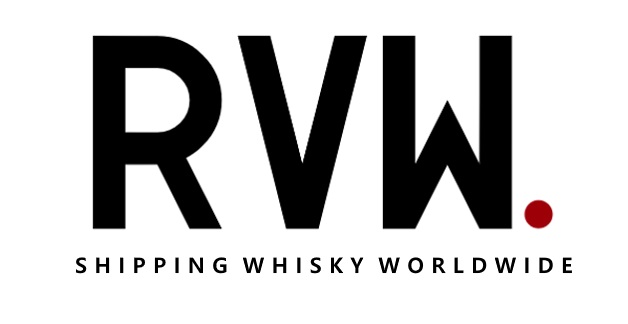Ardbeg Grooves

In the world of whisky, a few names consistently stand out for their dedication to tradition, innovation, and unparalleled quality. Ardbeg, a distillery based on the windswept Scottish island of Islay, is one of those revered brands. Known for producing some of the most peated and intense single malts, Ardbeg has a rich history and a strong following among whisky enthusiasts. One of the most unique and innovative expressions that Ardbeg has released in recent years is Ardbeg Grooves.
Launched in 2018 as part of the annual Ardbeg Day celebration, Ardbeg Grooves quickly captured the attention of whisky fans with its bold flavors, distinctive production process, and the intriguing story behind its creation. In this 2000-word exploration, we’ll delve deep into what makes Ardbeg Grooves such a special whisky—its history, production process, flavor profile, and the cultural references that shaped its release.
A Brief History of Ardbeg
Before diving into the specifics of Ardbeg Grooves, it’s important to understand the distillery's rich heritage. Ardbeg was founded in 1815 on the southern coast of Islay, an island famous for its heavily peated whiskies. The distillery has been producing whisky for over 200 years, and over that time, it has developed a reputation for bold, smoky, and complex single malts.
Like many Scottish distilleries, Ardbeg faced difficult times during the 1980s and early 1990s, including periods of closure. However, its fortunes turned in 1997 when Glenmorangie purchased the distillery, leading to a resurgence in production and the creation of several award-winning releases. Today, Ardbeg is celebrated for its commitment to traditional distillation techniques combined with innovative expressions that appeal to both long-time fans and newcomers.
The Story Behind Ardbeg Grooves
Ardbeg Grooves was released in 2018 as the annual limited-edition bottling for Ardbeg Day, an event that coincides with the Feis Ile festival on Islay. Each year, Ardbeg releases a special whisky to mark the occasion, and Grooves was inspired by the counterculture movements of the 1960s, a time defined by peace, love, music, and creative rebellion.
The whisky’s name, “Grooves,” refers to the unique casks used in its maturation process. Part of the whisky was aged in heavily charred red wine casks, which developed deep grooves in the wood. These grooves increased the surface area of the wood, allowing the whisky to absorb more of the cask’s flavors, resulting in a rich, multi-layered whisky that captures both the traditional Ardbeg smoky character and the fruity, spicy notes imparted by the casks.
The Production Process of Ardbeg Grooves
Ardbeg Grooves stands out not only for its flavor but also for the innovative production methods behind it. While the core of the whisky remains true to Ardbeg’s tried-and-true methods, some distinctive processes make Grooves truly unique.
The Foundation: Peat and Barley
As with all Ardbeg whiskies, Grooves starts with the use of heavily peated barley. Ardbeg is renowned for using some of the most intensely peated barley in the whisky world, with phenol levels around 55 parts per million (ppm). This peat gives Ardbeg its signature smoky flavor, which is instantly recognizable to fans of Islay malts.
The Aging: Grooved Casks
The most distinctive feature of Ardbeg Grooves is its use of grooved red wine casks. After aging in these casks, the intense charring left deep grooves in the wood. These grooves allowed the whisky to extract more flavors from the wood, resulting in a richer, more complex profile. The influence of the wine casks added layers of sweet fruitiness, subtle spice, and tannins that balanced beautifully with the traditional peat smoke.
In addition to the wine casks, part of the whisky used in Grooves was aged in traditional Ardbeg bourbon barrels. The combination of these two cask types created a harmonious blend of old and new flavors, resulting in a whisky that was both familiar and surprising.
The Blending: Achieving Balance and Complexity
Once the whisky had matured in these casks, it was blended to achieve a perfect balance of smoky, fruity, and spicy flavors. The goal was to maintain the classic Ardbeg character while introducing new elements from the grooved casks. This blending process is critical to the success of Grooves, ensuring that no single flavor dominates but rather that the whisky offers a well-rounded, evolving experience with each sip.
What Makes Ardbeg Grooves Stand Out?
Ardbeg Grooves lives up to its name by delivering a deep, multi-layered tasting experience. Just as the grooves in a vinyl record bring out the nuances of music, the grooves in the casks contribute to the complex symphony of flavors in this whisky.
Nose
On the nose, Ardbeg Grooves offers a tantalizing mix of classic Ardbeg aromas and unexpected notes. The familiar peat smoke is there, but it’s quickly joined by sweet, fruity aromas of ripe berries, cherries, and even some hints of apricot, all courtesy of the wine casks. There are also earthy undertones, with hints of herbs, spices, and a touch of toasted vanilla and caramel.
Palate
On the palate, the whisky reveals its full complexity. The initial hit of peat smoke is balanced by rich, sweet flavors of honey, toffee, and dark chocolate. The fruitiness from the nose carries through, with notes of dried figs, raisins, and candied orange peel. There’s also a spicy undertone, likely from the charred casks, with hints of black pepper, cinnamon, and a subtle tannic bite that adds structure and depth.
Finish
The finish is long and satisfying, with the peat smoke lingering but softening into a more delicate, savory note. The sweetness fades slowly, leaving behind a touch of sea salt, a nod to the maritime influence of Islay, and a warm, spicy tingle from the wood. The balance between the smoky, sweet, and spicy elements makes for a complex and rewarding finish that invites you to take another sip.
A Nod to the 1960s Counterculture
In addition to its distinctive flavor profile, Ardbeg Grooves also stands out for its packaging and design. Inspired by the counterculture and hippie movements of the 1960s, the bottle and packaging feature bright, psychedelic colors and designs. The label is adorned with peace signs, flowers, and bold fonts that evoke the spirit of love, peace, and freedom associated with the era.
The packaging reflects the creative and rebellious spirit behind the whisky, a reminder that Ardbeg is not afraid to push boundaries and experiment with new ideas while staying true to its roots.
Ardbeg Grooves in the Whisky World
Upon its release, Ardbeg Grooves was met with excitement and enthusiasm from whisky enthusiasts and collectors alike. Its limited-edition status made it a highly sought-after bottle, and it quickly became a favorite among Ardbeg fans. Beyond its scarcity, Grooves was praised for its unique flavor profile, combining the bold smokiness of traditional Ardbeg with the fruity, spicy complexity from the wine casks.
Grooves showcased Ardbeg’s ability to innovate while staying true to its identity. The whisky’s balance and complexity demonstrated how experimentation with cask types and aging processes could result in something that felt fresh and new while retaining the signature characteristics that make Ardbeg beloved by so many.
Conclusion
Ardbeg Grooves is a whisky that bridges tradition and innovation. Its deep grooves, both literal and metaphorical, bring forth a symphony of flavors that is at once familiar and surprising. By combining Ardbeg’s signature peaty character with the sweet, spicy influence of charred wine casks, Grooves offers a unique drinking experience that is rich, complex, and deeply satisfying.
For those who love Islay whiskies, and Ardbeg in particular, Grooves is a must-try. It’s a testament to the distillery’s commitment to quality and craftsmanship, as well as its willingness to explore new frontiers in whisky making. Whether you’re a seasoned Ardbeg enthusiast or just discovering the world of Islay malts, Ardbeg Grooves is a whisky that promises to delight and intrigue with every sip.
No comments found.












